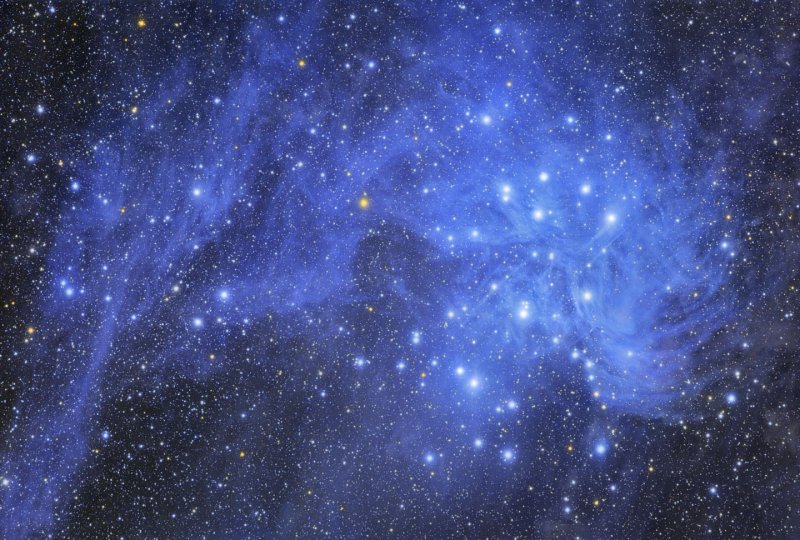
|
Credit & Copyright: Tony Hallas
Explanation:
Hurtling through a cosmic dust cloud a mere 400 light-years away,
the lovely Pleiades
or Seven Sisters star cluster is well-known for its striking blue
reflection nebulae.
This remarkable wide-field (3 degree)
image of the region
shows the famous star cluster at the right, while
highlighting lesser known
dusty reflection nebulae nearby, across an area
that would span over 20 light-years.
In this case, the sister stars and
cosmic dust clouds
are not related, they just happen to be passing through
the same region of space.
But astronomers using infrared detectors
have recently found a
dusty disk that really does belong to one young
Pleiades star -- HD 23514.
Surrounding HD 23514, the disk is estimated to be comparable in
size to the terrestrial planet zone in our own
solar system
and likely represents the
debris from the process
of rocky planet formation.
|
January February March April May June July August September October November December |
| ||||||||||||||||||||||||||||||||||||||||||||||||
NASA Web Site Statements, Warnings, and Disclaimers
NASA Official: Jay Norris. Specific rights apply.
A service of: LHEA at NASA / GSFC
& Michigan Tech. U.
Based on Astronomy Picture
Of the Day
Publications with keywords: pleiades - reflection nebula - open cluster
Publications with words: pleiades - reflection nebula - open cluster
See also:
- APOD: 2025 September 19 B The NGC 6914 Complex
- APOD: 2025 August 25 B The Meteor and the Star Cluster
- APOD: 2025 August 7 B The Double Cluster in Perseus
- APOD: 2025 July 8 B The Pleiades in Red and Blue
- APOD: 2025 April 28 B Gum 37 and the Southern Tadpoles
- APOD: 2025 April 8 B Moon Visits Sister Stars
- APOD: 2025 March 5 B Seven Sisters versus California
